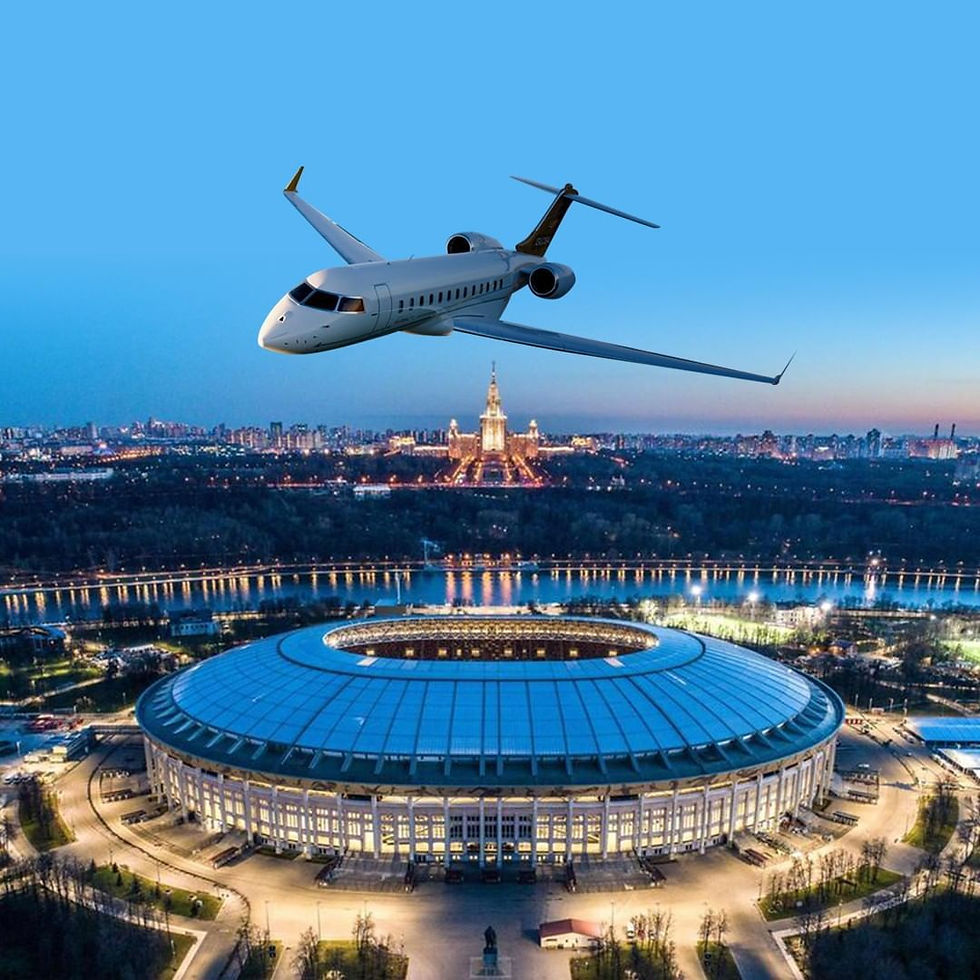Flying Between World Cup Host Cities: How Private Jets Will Make the U.S. Tournament Seamless
- Community Notes

- Aug 19
- 3 min read

The 2026 FIFA World Cup is set to be a landmark event in sports history, with a record 16 U.S. cities hosting matches. Fans, athletes, sponsors, and media professionals will need to navigate a sprawling itinerary, spanning multiple time zones and thousands of miles. Commercial travel options are expected to be overwhelmed, with sold-out flights, long TSA lines, and congested airport terminals adding stress to an already high-stakes event. For travelers who prioritize efficiency and convenience, private jet travel emerges as the ultimate solution, allowing you to bypass traditional obstacles and make the most of the tournament.
Why Private Aviation is the MVP of the 2026 World Cup
Flying private during the World Cup offers more than luxury—it provides unmatched flexibility and time-saving advantages. Instead of dealing with delayed commercial flights, long security checks, and limited routing options, travelers can depart according to their own schedule and land closer to the venues. For example, a fan or VIP can arrive at a small FBO airport just 20 minutes from the stadium, maximizing time for pre-game events and networking opportunities.
Private aviation also supports group travel. Families, corporate teams, or fan clubs can share the cost of a charter, making it more affordable per passenger without sacrificing comfort or privacy. Additionally, custom itineraries enable travelers to follow matches across cities seamlessly, something that commercial flights simply cannot accommodate efficiently.
Airport Access for World Cup Cities
Many major airports near World Cup venues—such as JFK in New York or LAX in Los Angeles—are expected to experience unprecedented congestion. Private jets, however, can utilize smaller airports with private terminals known as Fixed Base Operators (FBOs), offering a streamlined arrival and departure experience. Examples include:
New York/New Jersey: Teterboro Airport (TEB) or White Plains Airport (HPN)
Dallas: Dallas Love Field (DAL) or Addison Airport (ADS)
Miami: Opa-Locka Executive Airport (OPF)
Los Angeles: Van Nuys Airport (VNY)

Using these airports significantly reduces ground transportation time and avoids the bottlenecks commonly found at major commercial hubs. Travelers can move quickly from the tarmac to their hotel or stadium, improving efficiency and overall experience.
Cost-Effective Solutions Through Private Jet Brokers
Contrary to popular belief, private jet travel doesn’t always have to be prohibitively expensive. Working with a broker provides access to multiple operators, allowing travelers to find cost-effective solutions tailored to their specific itinerary. Brokers can identify empty leg flights—planes flying without passengers—that offer discounted rates. Additionally, shared charters allow groups attending the same matches to split the cost of a flight, making private aviation more accessible. By leveraging these options, travelers can customize routes between host cities without overpaying for unnecessary capacity or convenience.
Planning Ahead is Crucial
With millions expected to attend the World Cup, early booking is essential. Smaller airports near stadiums have limited capacity, and peak match days will see high demand across all flight options. By arranging private flights well in advance, travelers secure better rates, more suitable aircraft options, and a more reliable schedule, minimizing the risk of delays or last-minute cancellations.
Final Takeaway
Private jets provide the fastest, most flexible, and most stress-free way to navigate the 2026 FIFA World Cup. They save time, reduce travel-related anxiety, and allow travelers to fully immerse themselves in the event. Whether attending as a fan, sponsor, or part of a media delegation, early planning and collaboration with a private jet broker will ensure a smooth and efficient tournament experience.




Comments